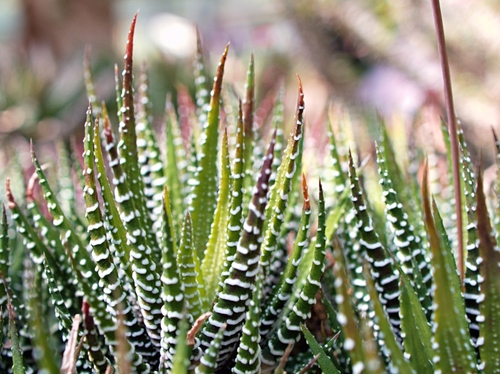Zebra cactus, also known as Haworthia fasciata, is a popular succulent that is native to South Africa. It is a low-maintenance plant that is easy to care for, making it a great choice for both novice and experienced gardeners. However, one common problem that many zebra cactus owners face is zebra cactus turning brown.
There are several reasons why zebra cactus leaves may turn brown. Some of the most common causes include overwatering, poor drainage, too much direct sunlight, and pest infestations. Understanding the underlying causes of browning can help you take the necessary steps to prevent it from happening in the future.
If you’re a zebra cactus owner who is struggling with browning leaves, don’t worry! With a little bit of knowledge and some simple care tips, you can help your plant thrive. In this article, we will explore the causes of zebra cactus browning, as well as some effective solutions and prevention strategies.
Key Takeaways
- Understanding the causes of zebra cactus browning can help prevent it from happening in the future.
- Overwatering, poor drainage, too much direct sunlight, and pest infestations are common causes of browning.
- Simple care tips, such as proper watering and sunlight, can help your zebra cactus thrive.
More on this category:
- Why Is My ZZ Plant Turning Brown?
- Sky Pencil Holly Turning Brown
- Skip Laurel Leaves Turning Brown in Winter
Understanding Zebra Cactus
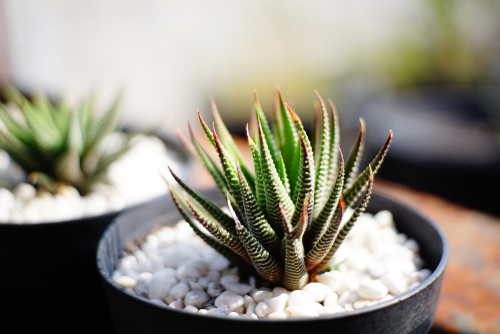
Zebra cactus, also known as Haworthia fasciata, is a popular succulent plant that belongs to the Asphodelaceae family. This plant is native to South Africa and is known for its striking appearance, with green leaves that feature white stripes or bands.
The botanical name for zebra cactus is Aphelandra squarrosa, and it is often confused with the zebra succulent, which is a different species altogether.
Zebra cactus is a tropical plant that thrives in bright, indirect sunlight and prefers well-draining soil. It is a slow-growing plant that can reach a height of up to 8 inches. The leaves of the zebra cactus are thick and fleshy, which allows it to store water for extended periods.
One of the reasons why zebra cactus is a popular houseplant is because it is relatively easy to care for. It requires minimal watering and can survive in a range of temperatures. However, like all plants, zebra cactus can develop issues if not cared for properly.
One common issue that zebra cactus owners face is the plant turning brown. There can be several reasons why this happens, including overwatering, underwatering, exposure to extreme temperatures, or pests. If you notice that your zebra cactus is turning brown, it is essential to identify the root cause and take corrective action.
In the next section, we will explore the different reasons why zebra cactus turns brown and what you can do to prevent it.
Zebra Cactus Turning Brown – 6 Common Problems
Zebra cacti are generally low maintenance and easy to care for, but they can still experience browning. There are several reasons why a zebra cactus may turn brown, including:
1. Overwatering and Root Rot
One of the most common reasons for zebra cactus browning is overwatering. When the plant is watered too frequently or too much water is given at once, the roots can become waterlogged and begin to rot.
This can lead to browning and wilting of the plant. To avoid this, it is important to allow the soil to dry out completely between watering sessions.
2. Underwatering and Drought Stress
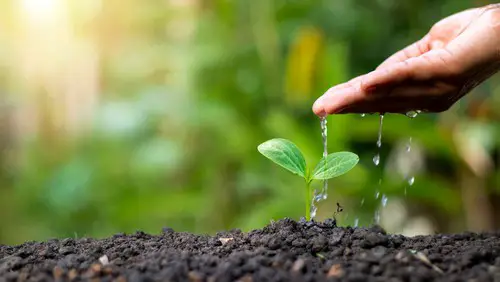
On the other hand, underwatering can also cause browning in zebra cacti. When a plant is not given enough water, it can become stressed and begin to wilt and turn brown. To prevent this, it is important to water the plant regularly, but not too frequently.
3. Inappropriate Sunlight Exposure
Zebra cacti prefer bright, indirect sunlight. Direct sunlight can cause browning and damage to the plant. If a zebra cactus is placed in an area with too much direct sunlight, it may begin to turn brown. To prevent this, it is important to place the plant in a location that receives bright, indirect sunlight.
4. Temperature and Humidity Factors
Zebra cacti prefer warm temperatures and low humidity. If the plant is exposed to cold drafts or high humidity, it may begin to turn brown. To prevent this, it is important to keep the plant in a warm, dry location.
5. Aging and Natural Process
As zebra cacti age, they may begin to turn brown and become woody. This is a natural process and cannot be prevented. However, proper care can slow down the aging process and keep the plant healthy for longer.
6. Pests and Diseases
Zebra cacti can be susceptible to pests such as mealybugs and spider mites, which can cause browning and damage to the plant. Fungal diseases such as root rot can also cause browning. To prevent pests and diseases, it is important to keep the plant clean and healthy, and to avoid overwatering.
Symptoms of Browning
Zebra cactus turning brown is a common problem that many plant owners face. Brown leaves, browning, brown leaf tips, drooping, mushy leaves, brown patches, and droopy stems are all symptoms of a zebra cactus turning brown. In this section, we will discuss the different symptoms of a zebra cactus turning brown.
Brown Leaves and Leaf Tips
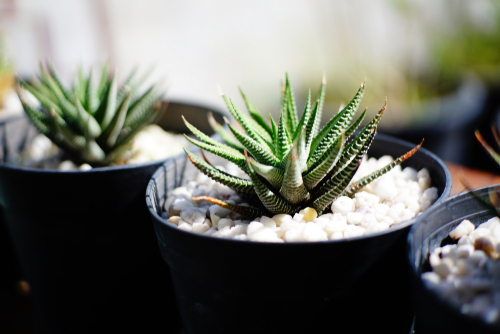
One of the most common symptoms of a zebra cactus turning brown is brown leaves and leaf tips. Brown leaves can be caused by a variety of factors, including overwatering, underwatering, too much sunlight, or too little sunlight.
Brown leaf tips are usually caused by dry air, low humidity, or too much fertilizer. If the brown leaves and leaf tips are caused by overwatering, the soil may be too wet, and the roots may be rotting.
Drooping and Mushy Leaves
Another symptom of a zebra cactus turning brown is drooping and mushy leaves. Drooping leaves can be caused by overwatering, underwatering, or too much sunlight.
Mushy leaves are usually caused by overwatering, which can lead to root rot. If the roots are rotting, the plant may not be able to absorb water and nutrients properly, which can cause the leaves to become mushy.
If you notice any of these symptoms in your zebra cactus, it is important to take action quickly to prevent further damage. The first step is to identify the cause of the problem, whether it is overwatering, underwatering, too much sunlight, or too little sunlight.
Once you have identified the cause, you can take steps to correct it, such as adjusting the watering schedule, moving the plant to a different location, or adjusting the amount of sunlight it receives.
Zebra Cactus Care Tips
Zebra cactus is a low-maintenance succulent that is known for its striking appearance and unique texture. However, like any other plant, it requires proper care to thrive. Here are some tips to help keep your zebra cactus healthy and beautiful.
1. Appropriate Watering
Zebra cactus is a drought-tolerant plant that prefers infrequent watering. Overwatering can cause root rot, which can be fatal to the plant. It is best to water the plant when the soil is completely dry.
When watering, make sure to saturate the soil thoroughly, but avoid getting water on the leaves as it can cause brown spots. It is also important to ensure proper drainage by using a pot with drainage holes.
2. Sunlight and Placement
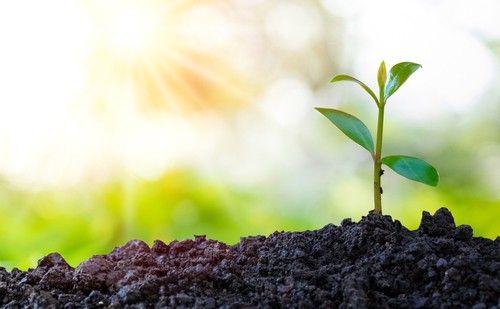
Zebra cactus thrives in bright, indirect light. It is best to place the plant near a window that receives filtered sunlight. Direct sunlight can cause the leaves to burn and turn brown.
If the plant is not receiving enough light, it may become leggy and lose its compact shape. It is also important to avoid placing the plant near air currents as it can cause the leaves to dry out.
3. Temperature and Humidity Control
Zebra cactus prefers warm temperatures between 65°F and 85°F. It is important to avoid exposing the plant to frost or extreme temperatures as it can damage the plant. Zebra cactus also prefers low humidity, so it is best to avoid placing the plant in a humid environment.
4. Repotting and Soil Requirements
Zebra cactus does not require frequent repotting and can thrive in a small pot. It is best to use a well-draining potting mix that is specifically formulated for cacti and succulents. The soil should be pathogen-free, have a pH balance of 6.0 to 7.0, and contain organic matter.
When repotting, make sure to use pruning shears to remove any dead or damaged roots.
5. Dealing with Pests and Diseases
Zebra cactus is generally pest and disease-free. However, it is important to keep an eye out for common pests such as mealybugs and spider mites. If the plant is infested, it can be treated with a wetting agent or mycorrhizae.
It is also important to ensure that the plant is not overwatered as it can attract pathogens and cause root rot.
Indoor Vs Outdoor Growing
When it comes to growing zebra cactus, there are some key differences between indoor and outdoor care. Indoor zebra cactus care requires different conditions than outdoor care, and it’s important to understand these differences to give your plant the best chance of thriving.
Indoor Zebra Cactus Care
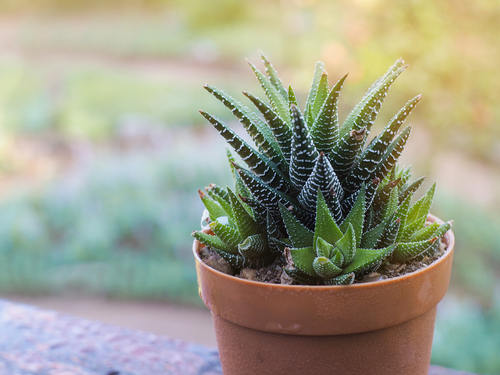
Indoor zebra cactus care is all about creating the right environment for your plant. Zebra cacti are native to tropical areas, so they prefer warm, humid conditions. When growing zebra cactus indoors, it’s important to mimic these conditions as closely as possible.
One of the most important factors to consider when growing zebra cactus indoors is lighting. Zebra cacti need bright, indirect light to thrive. Place your plant near a southern or eastern window for optimal light exposure.
If you don’t have access to a window with enough light, consider using a grow light to supplement your plant’s light needs.
Another important aspect of indoor zebra cactus care is watering. Zebra cacti are drought-tolerant plants that prefer to dry out between waterings. Water your plant thoroughly, then allow the soil to dry out completely before watering again. Overwatering can lead to root rot, which can cause your plant to turn brown and die.
Outdoor Zebra Cactus Care
Outdoor zebra cactus care is all about choosing the right location. Zebra cacti prefer warm, dry climates and well-draining soil. When growing zebra cactus outdoors, it’s important to choose a location that provides these conditions.
One of the most important factors to consider when growing zebra cactus outdoors is lighting. Zebra cacti need bright, indirect light to thrive. Choose a location that receives plenty of sunlight, but also provides some shade during the hottest parts of the day.
Another important aspect of outdoor zebra cactus care is watering. Zebra cacti are drought-tolerant plants that prefer to dry out between waterings. Water your plant thoroughly, then allow the soil to dry out completely before watering again. Overwatering can lead to root rot, which can cause your plant to turn brown and die.
Prevention and Solutions
Zebra cacti are hardy plants that can tolerate a wide range of environmental conditions. However, they are not immune to problems such as browning leaves, which can be caused by a variety of factors. In this section, we will discuss some preventive measures and solutions to help keep your zebra cactus healthy and green.
1. Watering
Overwatering is one of the most common causes of browning leaves in zebra cacti. It can lead to root rot, which can kill the plant. On the other hand, underwatering can cause the plant to wilt and dry out, leading to brown leaves.
To prevent overwatering, make sure that the soil is well-draining and that the pot has drainage holes. Use a moisture meter to check the soil’s moisture level before watering and avoid watering if the soil is still moist. In contrast, if the soil is too dry, water the plant thoroughly until water drains out of the bottom of the pot.
2. Environmental Factors
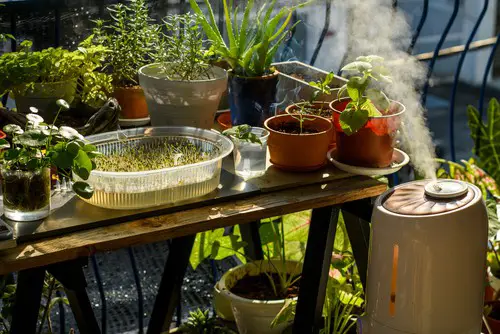
Zebra cacti prefer dry, warm environments with low humidity. High humidity can lead to excess moisture, which can cause root rot and browning leaves.
To prevent this, place the plant in a well-ventilated area with good air circulation. Avoid placing the plant near drafty areas or heating vents, as this can cause leaf burn and stunted growth.
3. Pot Size and Soil
Zebra cacti prefer to be slightly root-bound, so it is best to use a small pot. A pot that is too large can lead to compact soil, which can cause excess moisture and root rot.
Use a well-draining soil mix specifically formulated for cacti and succulents. Avoid using soil that is too dense, as this can cause excessive transpiration and browning leaves.
4. Solutions
If your zebra cactus has already developed brown leaves, there are a few things you can do to help save it. First, check the soil’s moisture level and adjust your watering accordingly.
If the soil is too wet, allow it to dry out before watering again. If the soil is too dry, water the plant thoroughly. Second, check for root rot by gently removing the plant from the pot and inspecting the roots.
If you notice any soft, mushy roots, trim them off and repot the plant in fresh soil. Finally, if the plant has developed corking, there is little you can do to reverse the aging process. However, providing better care to your cactus can help prevent further corking.
Frequently Asked Questions
What causes brown spots on zebra haworthia leaves?
Brown spots on zebra haworthia leaves are often caused by overwatering or sunburn. When the plant receives too much water, the leaves may become brown and mushy. On the other hand, if the plant is exposed to direct sunlight for too long, the leaves may turn brown and dry out.
How do I prevent my zebra cactus from turning brown?
To prevent your zebra cactus from turning brown, make sure to provide it with well-draining soil. Zebra cacti prefer to be in soil that is not too wet. Additionally, make sure to water your zebra cactus only when the soil is completely dry. Overwatering can cause the plant’s leaves to turn brown.
Why are the leaves on my zebra succulent turning brown?
The leaves on your zebra succulent may be turning brown due to a lack of sunlight or overwatering. Zebra succulents require bright, indirect sunlight to thrive.
If the plant is not receiving enough light, the leaves may turn brown and fall off. Overwatering can also cause the leaves to turn brown and mushy.
What are the signs of overwatering a zebra cactus?
The signs of overwatering a zebra cactus include brown and mushy leaves, a soft and mushy stem, and a foul smell coming from the soil. Overwatering can cause the roots of the plant to rot, which can ultimately lead to the death of the plant.
How much light does a zebra haworthia need?
Zebra haworthia plants require bright, indirect sunlight to thrive. They can tolerate some direct sunlight, but too much can cause the leaves to burn and turn brown. Place your zebra haworthia near a window that receives bright, indirect sunlight for most of the day.
When should I water my zebra cactus?
You should water your zebra cactus only when the soil is completely dry. Zebra cacti can go for long periods without water, so it’s important not to overwater them. Check the soil by sticking your finger about an inch deep into the soil. If the soil feels dry, it’s time to water the plant.

Hey, I’m Lisa and I’ve been an avid gardener for over 30 years. I love writing, talking and living in the garden! Feel free to connect with me on my socials below

